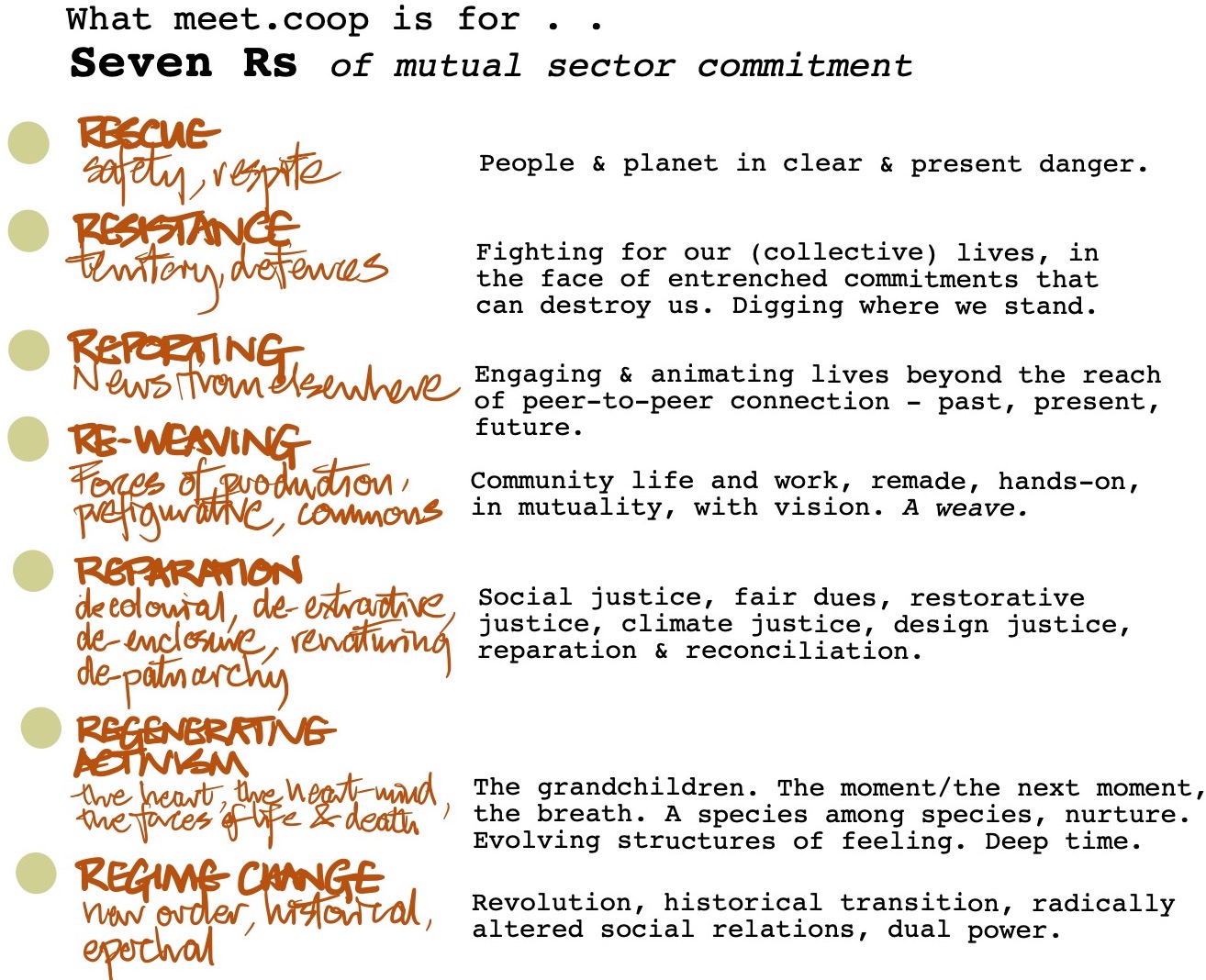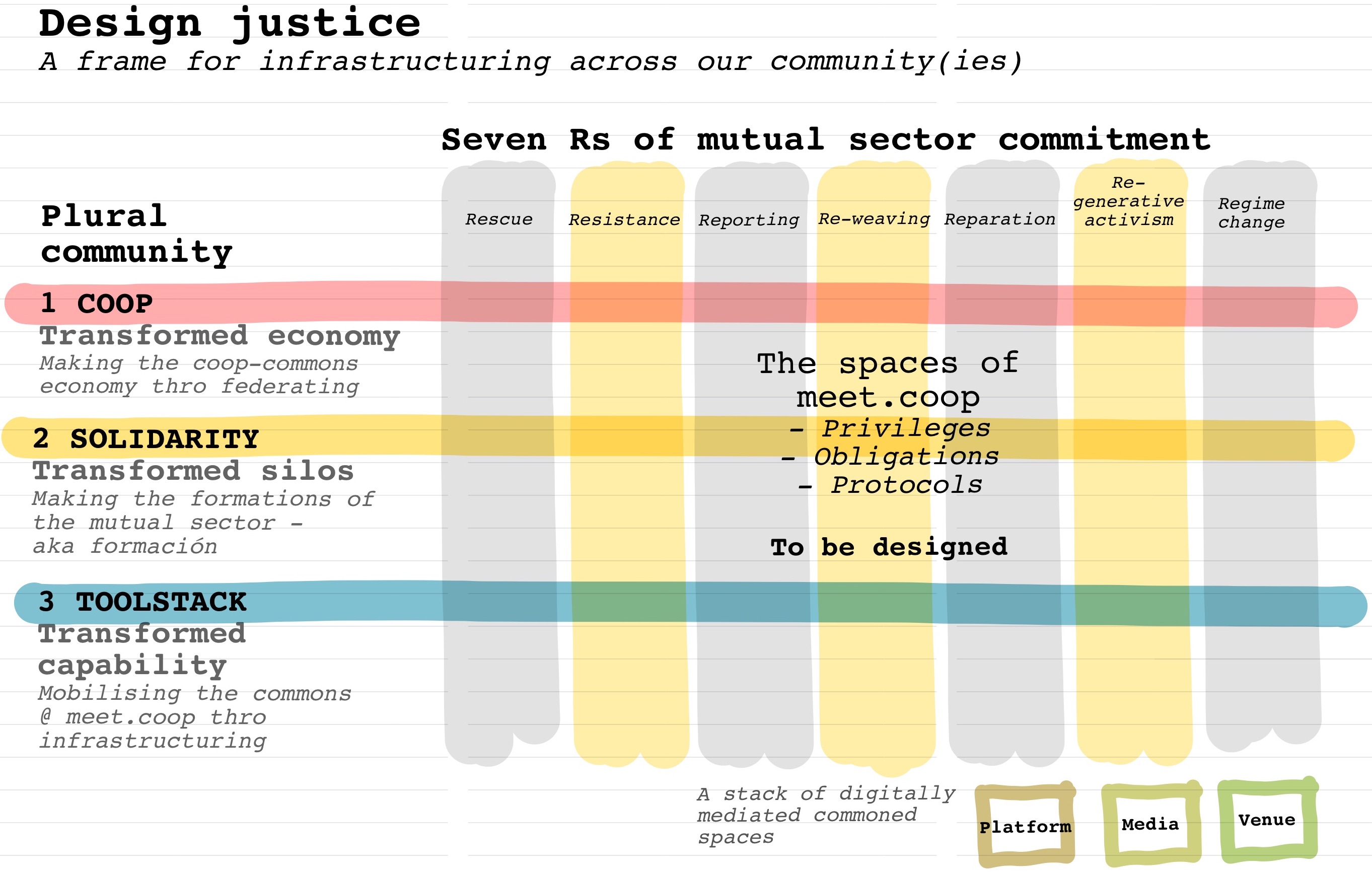Here we outline the notion of civil society space, and its significance.
This is the 'top level' of the stack of commons. Capability in civil society - to organise, to identify and meet needs, and to ensure fairness and equity across diverse communities and locations in a pluriverse - is what democratic digital infrastructuring is for.
See: A real full stack
In the Federation we can say: > The civil society layer is a **commons of capability** to achieve wellbeing, mutuality, pluriverse and justice; across regions and across generations, for the grandchildren's grandchildren and all species.
Practices in this commons absolutely depend on capabilities to develop some kind of working regime of eldership, which stands in aware relationship with the ancestors and also with the grandchildren's grandchildren. It joins up, of course, with the planet layer: full stack, full circle. The planet layer
In meet.coop - simply because the question of 'what is it all for?' is so complex - we had a hack on what civil society is/does. We called it the 'Seven Rs of activist commitment'. A schema is below and in due course a page will be here too. Seven Rs

Seven Rs of civil society activist commitment
The seven Rs can be taken together with the sectors of the Community layer (the membership of the digital commons) to create a matrix within which matters of design justice can be systematically explored. See the schema below. Design justice

Design justice - A schema for exploring the contributions of infrastructure(ing) proposals
> A project proposal with a strong proposition on design justice will have a better chance of being fundable.